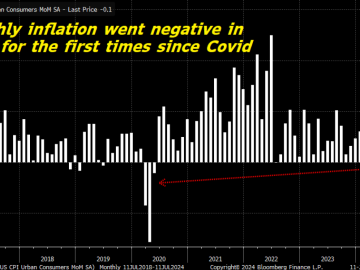- Chase, with Chief Product Officer Rohan Amin and CIO Gill Haus at the helm, is focused on advancing technology and modernizing digital experiences.
- Tech, product, design, data, and digital teams collaborate to serve customer needs, operating as a product-focused organization
- Internally called PXT, the organization is the heart and brain driving the future of digital banking at Chase.
The past four and a half years have been a transformational time at Chase. While the pandemic brought chaos and uncertainty to many businesses, it also provided an opportunity to rethink strategy and processes in a new digital age. Chase’s technology team overhauled the rails supporting digital transactions, ATM usage, Chase.com, and the Chase Mobile® app to keep products running for the 84 million consumers and 6.9 million small businesses it serves.
At the same time, the organization ramped up hiring efforts, supported talent with learning opportunities, and built a strong culture of teamwork where heads of product work collaboratively with designers, data and tech leaders to collectively make decisions that bring the Chase customer experience to life.
By embracing the opportunity head-on, the Chase technology team started an internal movement that has since driven engagement, development, and unparalleled collaboration across the entire organization.
Teamwork makes the dream work
Rohan, Gill, and their leadership team are leading the transformation, prioritizing a culture rooted in collaboration that encourages openness and transparency. They focus on getting all cross-discipline teams to work together and help people in the business understand how product teams bring experiences to life and shape the future of banking.
Rohan Amin, chief product officer at Chase.
Chase
The team is driving change through three major shifts:
- Moving to the cloud: Many of the bank’s underlying systems needed to be upgraded and transitioned from decades-old proprietary frameworks to the cloud. This included the bank’s platform — a vital organ at the heart of the largest financial institution in the United States. While difficult to accomplish, the team recognized this need to ensure resiliency and cybersecurity for its systems to protect the bank and its customers. By optimizing infrastructure, the team has made significant progress moving applications to the cloud and creating more effective tools for developers to do it in a way that is a better experience for them.
- Consumers shifting to mobile banking: Customers want to be able to bank wherever they are. They very quickly started to embrace mobile banking tools, and the ways they pay and manage transactions are now heavily dependent on digital experiences. This prompted rapid deployment of tech solutions for employees supporting digital experiences. Mobile banking is here to stay, and customers still want access to branches for advice and conversations, which is why we have continued to invest in growing our physical footprint while making it easier to do more from the app and online.
- The need to be agile: To truly transform, Chase had to rethink its internal workings to become more efficient, collaborative, and agile. The goal was to become faster, nimbler, and more innovative to help 84 million customers access their bank accounts and use their money more effectively.
Gill Haus, chief information officer at Chase.
Chase
Amid all these changes, the team’s leaders have championed the importance of keeping everyone learning and growing. To do so, Chase established comprehensive learning agendas across all teams, hosts frequent town halls and mentorship programs, and conducts regular site visits to personally hear team progress, discuss challenges and express appreciation.
A few milestones
This transformational journey hasn’t happened overnight and continues to play a central role in the future of Chase, with a focus on cloud and artificial intelligence and machine learning (AI/ML) driving innovation in product development, technology, payments, and security including:
- Continuing to move technology to the public and private cloud to fully maximize the power of data.
- Reaching milestones of 70% of applications and 75% of data moved to public and private cloud by the end of 2024.
- Opening four new data centers that are 30% more efficient than legacy data centers.
- Focusing on emerging and evolving security risks, including cybersecurity and protecting the bank and its customers from fraud.
- Investing in AI/ML and its transformational capabilities to drive real value for Chase and its customers, including software engineering, customer service, and operations, and helping our employees’ productivity.
Other changes driven by their leadership include:
- Reorganization: Streamlined nearly 1,000 project-based teams to about 100 product-focused teams.
- Job creation: Established new roles and job families across four main disciplines — tech, design, data, and product.
- New business lines: Launched Connected Commerce, a new division combining travel, dining, and card experiences from acquired companies like The Infatuation.
- Enhanced customer experience: Improved satisfaction ratings in the Chase Mobile® app and other digital platforms.
- Product innovation: Introduced a suite of products and digital tools including Pay in 4, Wealth Plan, Score Planner, Spending Planner, and more.
- ATM modernization: Upgraded ATM platforms and accelerated rollout of new features.
- Skill development: Boosted cloud certifications across the organization by 70%.
Looking ahead
As AI/ML continues to be tested and evolve, Chase envisions GenAI helping to reimagine entire business workflows, and will continue to experiment with these capabilities and implement solutions in a safe, responsible way.
AI has the potential to augment virtually every job and will help ensure data is high quality and easily accessible upon completing migration of analytical data to the public cloud. These new data platforms offer high-performance computing power, which will unlock the bank’s ability to use data.
Additionally, Chase has a robust, well-established risk and control framework to proactively stay in front of AI-related and other risks and innovations, including using AI to help detect, mitigate, and counter fraud attempts, enhancing the bank’s product, cybersecurity, and payments capabilities while prioritizing innovation and resiliency.
The PXT organization at Chase is now tens of thousands of people strong and they are not just modernizing a banking giant; they are redefining what it means to manage money and develop products in the digital age. By driving a culture of innovation, resilience, and collaboration, they’re building a better way to bank and creating lasting impacts in one of the oldest industries.
Learn more on Next at Chase, a blog about technology, product, design, data and analytics, at Chase.
This post was created by Chase with Insider Studios.
JPMorgan Chase is an Equal Opportunity Employer, including Disability/Veterans
For Informational/Educational Purposes Only: The opinions expressed in this article may differ from other employees and departments of JPMorgan Chase & Co. Opinions and strategies described may not be appropriate for everyone, and are not intended as specific advice/recommendation for any individual. You should carefully consider your needs and objectives before making any decisions, and consult the appropriate professional(s). Outlooks and past performance are not guarantees of future results.
Any mentions of third-party trademarks, brand names, products and services are for referential purposes only and any mention thereof is not meant to imply any sponsorship, endorsement, or affiliation.



